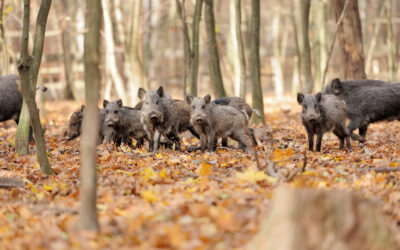
Best of all, HyperLabel is available for free, with no label quantity restrictions. You can download it from the App Store, or Microsoft.
HyperLabel offers the fastest path to implementing ML and allows individual data scientists, developers and engineers, as well as in-house or distributed labeling teams to create high-quality training datasets.
You can read the full text of the HyperLabel Fundamentals series on the Sixgill Medium channel.
Fundamentals of Image Classification with Create ML
In the first HyperLabel tutorial, Logan Spears, Innovation Chief at Sixgill, takes a deep dive into the process of assigning classifications – or categories – to images with HyperLabel.
In keeping with Sixgill’s namesake – the sixgill shark – the image classification tutorial walks readers through the process of training an ML model to recognize and classify different shark species from a collection of uploaded images.
Here’s an overview of the basic steps involved:
Finding Photos of Sharks
There are free and simple ways for developers to gather photos of just about anything. One source Spears recommends is Bing Image Search API, which Microsoft makes available to developers free for limited uses, and provides some tips on making the use of photos easy and appropriate for ML labeling.
Using HyperLabel to Label the Images
This section of the tutorial provides detailed tips and tactics for using HyperLabel to label your images so they can be used for ML model training purposes. For example, HyperLabel can easily be set to filter out irrelevant images, or images that create a “false positive” where the model incorrectly predicts a positive match.
Creating Your Project in HyperLabel
Sixgill’s Innovation Chief walks readers through the HyperLabel process to quickly and easily create a new project, add a data source—from desktop or cloud—and select label types to be added to your project schema.
In the shark example, the Name field is simply “shark” and the Type would include various classifications of sharks, such as sand sharks, threshers, sawsharks and so on.
At this point, says Spears, labeling becomes easy and straightforward. HyperLabel provides tools for easy image modification, handling and editing, as well as label copying from one image to the next.
Upon completion, the HyperLabel review screen provides information about your new dataset, including how many images were labeled or skipped, how long the process took, and more.
Your labels are now ready to be exported and used for training, and the full tutorial provides details on the exact steps to take in order to make this happen.
Training Data for Create ML

Here again, the tutorial will tell you exactly what you need (for example, you’ll need Xcode installed) and how to proceed, all the way through validation.
Go here to read the full tutorial, which includes helpful screenshots for each step. And follow the Sixgill Medium Channel for future installments in this series on HyperLabel fundamentals.



